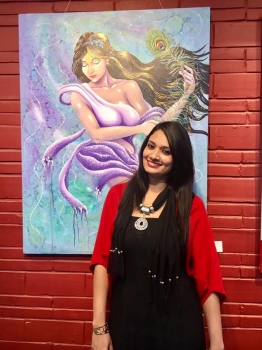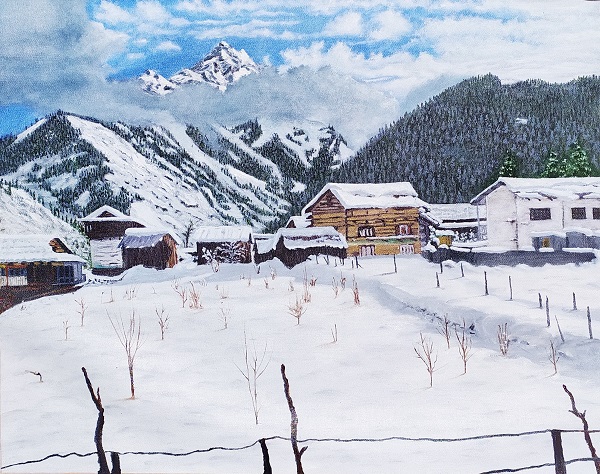
In artistic expression, oil and watercolor paintings stand as timeless pillars of creativity and aesthetic allure. Each medium possesses its own unique charm. Watercolor paintings have an ethereal transparency and smooth washes, and oil paintings are known for their texture and warmth. When these artistic forces clash, a magical synergy occurs. The practice of mixing media and transcending traditional boundaries adds complexity and depth to the artistic narrative.
The fusion of oil and watercolor paintings unveils a gateway to a realm teeming with artistic possibilities. This union is a blend of transparency and vibrancy interwoven with the richness and depth inherent in both mediums. A harmonious interplay unfolds, transcending the limitations imposed by individual artistic tools. The significance lies in the dynamic contrast and complementarity, where the distinct characteristics of watercolor and oil magnify each other. The outcome is a visual symphony that captivates the senses.
The Artistic Fusion: Oil and Watercolor Paintings
In the vast palette of artistic expression, the harmonious interplay of watercolor and oil paintings creates a captivating fusion that deeply engages the senses. Let's delve into the distinctive techniques inherent to each medium and the exquisite synergy that unfolds when they intertwine on the canvas.
Understanding Watercolor Techniques
Let's have a quick look at the fundamental techniques of watercolor paintings.
1.Transparency and Layering
Watercolor, an ethereal charm, is based on the interaction of paint and water. Transparency is the hallmark that allows light to pass through the layers, creating a luminous effect. The artist is well versed in the delicate dance of layering, each wash building on the last, revealing subtle and surprising depth. The transparency of watercolor allows for subtle colors, making it a medium that thrives on controlled transparency.
2.Unique Brushwork and Washes
The watercolor technique is a symphony of brushwork and washes. The artists wield the brush with precision, creating strokes that range from broad and sweeping to fine and intricate. The magic lies in the fluidity of washes, where the controlled flow of water and color onto the paper creates a sublimation and gentle transformation. This unique technique allows watercolor to capture the essence of fleeting moments and delicate atmospheres.
Exploring Oil Painting Techniques
The techniques that give unique charm to oil paintings are:
1.Rich Texture and Impasto
Oil paintings, in contrast, are celebrated for their rich textures and pronounced impasto. Artists use thick applications of paint, sculpting the surface to add a tactile dimension. The three-dimensional quality achieved through impasto makes the art more realistic. It invites viewers to not only see but feel the strokes. The richness of texture in oil paintings is a testament to the medium's ability to convey depth and substance.
2.Blending and Glazing
Blending and glazing are integral to the art of oil painting. Artists skillfully blend colors on the palette and canvas, creating seamless transitions and subtle gradients. Glazing involves applying soft colors over dry paint, enhancing the light and complicating the composition. This careful process allows for a wide range of textures and colors, giving the oil painting a breathtaking look.
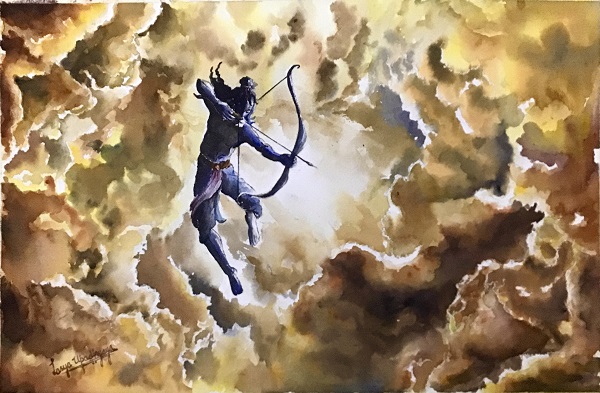
The Harmony of Color
Color, the silent language of art, unfolds its brilliance in the hands of skilled painters. In this exploration, we delve into the distinct realms of watercolor and oil paintings, examining how each medium achieves harmony through vibrancy and depth.
Vibrancy in Watercolor
Watercolor is an art medium that dances with vibrancy. It is celebrated for its fluidity, transparency, and the vivid intensity it brings to the canvas. It is a visual odyssey where transparency meets intensity and where the canvas becomes a vibrant symphony of colors painted with the enchanting medium of watercolor.
1.Intensity and Transparency
Watercolor, with its fluidity and transparency, brings forth a unique vibrancy in the hands of artists. The intensity of pigments is accentuated as they gracefully mingle with the water. The magic lies in the delicate balance artists strike between concentration and dilution, allowing hues to dance across the paper with a captivating luminosity.
2.Creating Luminosity
The luminosity inherent in watercolor paintings is a testament to the medium's ability to harness the play of light. As pigments interact with the paper's surface, they create a radiant glow that adds a dynamic quality to the artwork. This luminosity, achieved through carefully layered washes, imparts a sense of life and movement to the composition.
Depth in Oil Paintings
Oil paintings stand as timeless masterpieces, stunning in their depth and complexity. Beyond the surface of the canvas, skilled artists weave a narrative that extends to the third dimension. It invites viewers into a world where colors and textures combine to create a mesmerizing visual experience.
1.Layering and Building Rich Tones
In oil paintings, depth is meticulously crafted through the technique of layering. Artists build layers of paint, allowing each stratum to contribute to the richness of tones. This deliberate layering not only intensifies the colors but also creates a visual journey through the artwork. The depth achieved through layering is characteristic of the oil painting, inviting viewers to immerse themselves in the intricate layers of the artist's vision.
2. Achieving a Three-Dimensional Effect
With its ability to sculpt space, oil painting goes beyond a two-dimensional plane. Through the strategic use of shadows, lighting, and perspective, artists achieve a three-dimensional effect that brings their creations to life. The play of light on the textured surface of the canvas creates a tactile illusion. It gives the artwork a sense of visibility and invites viewers to explore its depths.
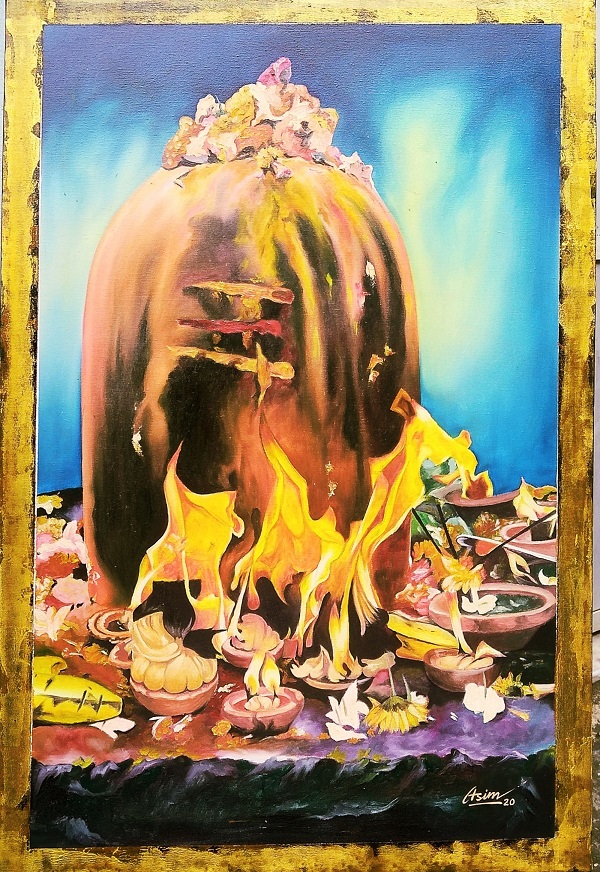
Techniques and Processes
Artistry unfolds in the mastery of techniques and the interplay of processes. When it comes to the fusion of oil and watercolor paintings, the result is a captivating dance between transparency and richness, tradition and innovation. In this exploration, we delve into two key aspects that define the beauty of combining these distinct mediums.
Contrast and Complementarity
The interplay between contrast and complementarity stands as a captivating dance. Here, opposing elements find harmony and diverse mediums converge on the canvas. Let's unveil the enchanting world of combining watercolor and oil painting.
How Oil and Watercolor Complement Each Other?
Watercolor possesses a transparent and fluid quality that harmoniously complements the opulence and texture intrinsic to oil paintings. The translucent nature of watercolor enables the subtle emergence of underlying oil layers. Thus crafting a depth that captivates with its intrigue and visual stimulation. This symbiotic relationship between the ethereal essence of watercolor and the tactile richness of oils results in a harmonious fusion. It breathes life onto the canvas.
Achieving Harmony in Contrasts
The contrast between the delicate transparency of watercolor and the bold texture of oils creates a visual symphony. Artists skillfully play with this dichotomy, using the stark differences to highlight certain elements or evoke specific emotions. It's in the delicate balance of contrast and harmony that the true magic of mixing watercolor and oil unfolds, creating compositions that engage and resonate.
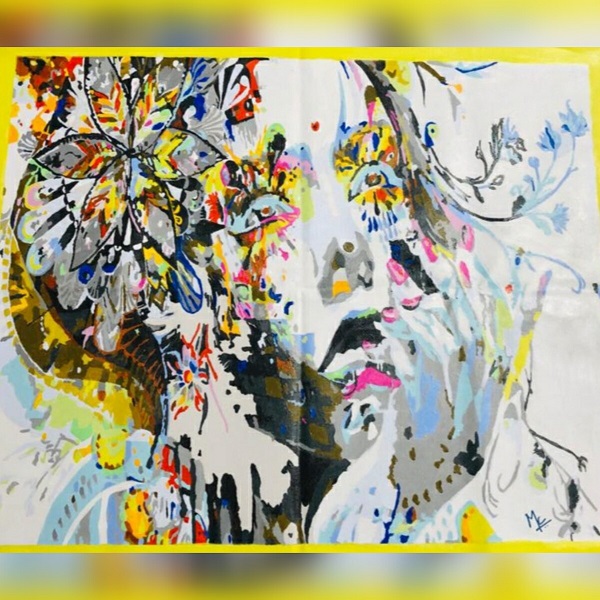
Mixing Styles
The blending of watercolor and oil paintings goes beyond the limitations of conventional mediums. It is in this intersection of styles that the genuine spirit of artistic evolution takes center stage.
Bridging Traditional and Contemporary
The blending of oil and watercolor paintings provides a link between classical and contemporary artistic expressions. It pays homage to the time-honored techniques of the Old Masters while embracing the inventive and experimental spirit of modern art. Artists navigate the crossroads of age-old traditions and cutting-edge approaches. They craft works that pay tribute to history while simultaneously pushing the limits of artistic exploration.
Pushing Boundaries with Hybrid Techniques
The beauty of combining watercolor and oil lies in the freedom it provides for artists to push the boundaries of traditional techniques. This fusion allows for hybrid approaches where artists seamlessly weave digital elements, unconventional materials, or experimental methods into their compositions. The result is a genre-defying exploration that not only challenges artistic norms but also opens new avenues for creative expression.
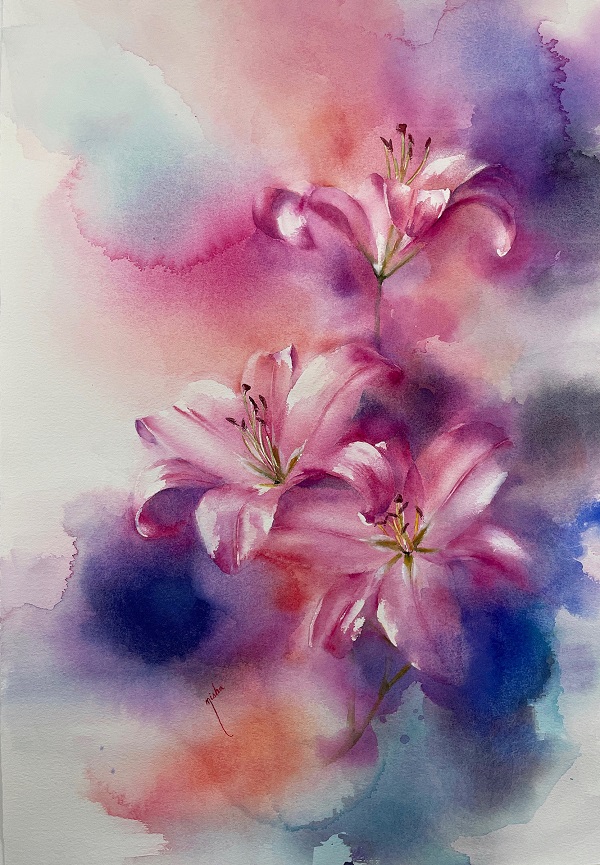
Wrapping Up
The transparent dance of watercolors and the textured richness of oils create a captivating fusion that captivates both the eye and the soul. The interplay between these contrasting elements produces a visual symphony, highlighting the magic that unfolds when these mediums coalesce. As artists continue to push the boundaries, experimenting with techniques that blend tradition and innovation, the future promises an even richer tapestry of artistic expression. This fusion opens new avenues, encouraging artists to explore uncharted territories, redefine norms, and create masterpieces that resonate across time.
For those inspired to embark on their artistic journey or enhance their collection, Indian Art Ideas offers you a curated selection that celebrates the beauty of blending oil and watercolor paintings. Immerse yourself in a world where tradition meets innovation and artistic boundaries are redefined.













